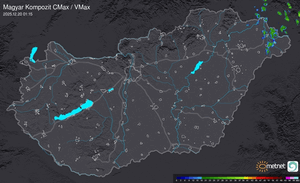Globális jelenségek
Az ominózus cikk eredeti összefoglalójából tényleg kiderül, hogy itt a messinai sókrízis legutolsó fázisáról van szó, ill. az újdonság valójában az, hogy az erõteljes erózió a Földközi-tenger "végleges" visszatöltõdése után is fennmaradt, a szerzõk szerint az addiginál melegebb, csapadékosabb klíma miatt. (És valóban, az Alpok egykori kiterjedésének megállapításához a szerkezeti vonások mellett az üledékek is kellettek.)
"Six million years ago, the Alps ceased their outward and upward expansion and began to decrease in size. By analysis of sediments and structures on the southern margin of the Alps, Willett et al. demonstrate that this reversal in growth rate was coincident with an increase in the volume of eroded sediment from the Alps. Furthermore, it occurred during the Mediterranean salinity crisis, when the Mediterranean Sea lost its connection to the global ocean system and desiccated. These observations suggest that erosion of the Alps outpaced its tectonic growth as a response to deep incision of the rivers flowing from the Alps into the Mediterranean basin. However, erosion rates remained high after the Mediterranean refilled, suggesting an additional cause. Willet et al. argue that the last stage of the salinity crises is marked by an influx of freshwater that represents a shift to a warmer, wetter European climate following the end of the Miocene glacial period. This wetter climate was responsible, not only for the freshwater in the Mediterranean during the salinity crises, but also for the enhanced erosion rates in the Alps, allowing erosion to outpace tectonic growth and reduce the size of the Alps."
"Six million years ago, the Alps ceased their outward and upward expansion and began to decrease in size. By analysis of sediments and structures on the southern margin of the Alps, Willett et al. demonstrate that this reversal in growth rate was coincident with an increase in the volume of eroded sediment from the Alps. Furthermore, it occurred during the Mediterranean salinity crisis, when the Mediterranean Sea lost its connection to the global ocean system and desiccated. These observations suggest that erosion of the Alps outpaced its tectonic growth as a response to deep incision of the rivers flowing from the Alps into the Mediterranean basin. However, erosion rates remained high after the Mediterranean refilled, suggesting an additional cause. Willet et al. argue that the last stage of the salinity crises is marked by an influx of freshwater that represents a shift to a warmer, wetter European climate following the end of the Miocene glacial period. This wetter climate was responsible, not only for the freshwater in the Mediterranean during the salinity crises, but also for the enhanced erosion rates in the Alps, allowing erosion to outpace tectonic growth and reduce the size of the Alps."



